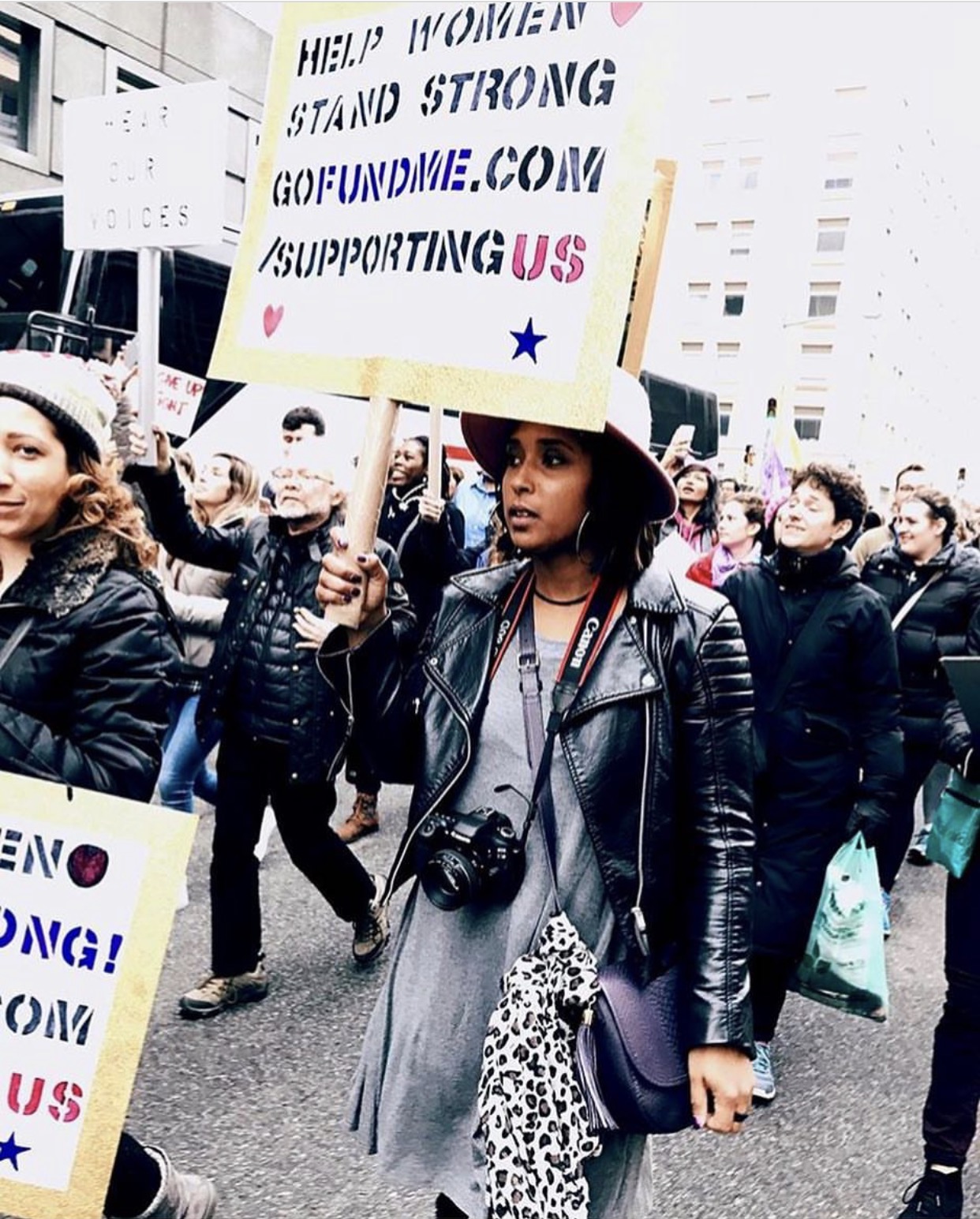
If you didn’t know this was happening or still haven’t decided if you will participate, here’s what you need to know about “A Day Without a Woman” tomorrow.
On Wednesday, which is International Women’s Day, the organizers behind the historically successful Women’s March will attempt to harness that energy towards a general strike, dubbed “A Day Without a Woman.” The goal, according to organizers, is to recognize “the enormous value that women of all backgrounds add to our socio-economic system—while receiving lower wages and experiencing greater inequities, vulnerability to discrimination, sexual harassment, and job insecurity.”
Despite our 45th president’s nearly all-white-male Cabinet and his many misogynist ways and decisions, this is not explicitly an anti-Trump strike—although it will undoubtedly be interpreted that way by many participants and observers, as it stands in opposition to everything he and Republicans in Congress represent.
On 1/21, we marched. On 3/8, we strike! Join us for a #DayWithoutAWoman.
(Thank you to @dreamonhero1 for this awesome #WomensMarch film) pic.twitter.com/SnvSxhdmkn
— Women's March (@womensmarch) March 3, 2017
Who’s involved?
“A Day Without a Woman,” whose organizers include Women’s March co-chairs Tamika Mallory, Carmen Perez and Linda Sarsour, is taking place in solidarity with the International Women’s Strike, which has partners in over 50 countries.
“A Day Without a Woman” has been endorsed by several organizations and businesses, including Amnesty International, Alliance for Justice, Sonos, and Moms Demand Action. It’s not clear yet whether any of the members of Congress who showed up to the Women’s March will be involved in the strike.
How can I participate?
According to organizers, women can participate in any or all of the following ways: by refraining from paid and unpaid work, by not shopping in stores or online (with the exception of local small businesses and women-owned businesses), and/or by wearing red, which signifies “revolutionary love and sacrifice.”
In their FAQ section, organizers acknowledge that a large number of women, whether due to parental obligations or out of economic necessity, won’t be able to participate in the strike taking place on their behalf. “We strike for them,” they write, and “women and allies with greater privilege are called to leverage that resource for social good on March 8th.” For some uniformed workers, it’s noted, even wearing red is a significant act of defiance; “everyone’s involvement signifies an equal commitment to the day.”
Businesses can participate by closing for the day or giving women workers the day off, and households can give housekeepers and caregivers a paid day off. Men can wear red in solidarity, and “lean into care work and housework.”
(The FAQ also links to this list of ideas for teachers who want to incorporate the ideas surrounding the strike into the day’s lesson plan.)
A full women's strike for just ONE day would cost the economy $21 billion. #daywithoutawoman pic.twitter.com/uKbdoesQxQ
— CAP Action (@CAPAction) March 7, 2017
What should I do while I strike?
If you’re able to take the day off work, there are a number of rallies and events taking place around the country. If you live in New York, in addition to the Day Without a Woman gathering at 12 pm, the International Women’s Strike has a list of events going on throughout the day, followed by a rally at 4 pm.
"and god created woman.." #daywithoutawoman @womensmarch pic.twitter.com/Lfaqt4ymEY
— MAXWELL (@_MAXWELL_) March 8, 2017
Can men participate?
Yes. Men are being asked to help with caregiving and other domestic chores on Wednesday. They are also being encouraged to rally for equal pay and other workplace issues for women.
What about private households?
Heads of households are being encouraged to give a paid day off to caregivers, nannies and housekeepers.
According to Fox News,
Several schools in at least three states are closing Wednesday so teachers can participate in “A Day Without a Woman” strike in which organizers are urging female workers to stay home. On Monday, school officials in Alexandria, Va.; North Carolina’s Chapel Hill-Carrboro City School District and New York announced they are canceling classes in anticipation of staff shortages due to the event.
Theoretically, what would a day without women truly look like? Here are some of the ways America would suddenly be transformed if all women went on strike or simply vanished altogether.
Nearly half of America’s workforce would disappear, 47% of all workers in the United States. Median earnings would soar. Women work nearly two-thirds of the minimum-wage jobs in the U.S., and across all industries women make 79¢ for every $1 earned by men. Median annual earnings for full-time female workers were $39,621 in 2014, compared to $50,383 for men. So if women were somehow removed from the picture, median earnings would suddenly rise sharply.
America’s children wouldn’t learn much. More than three-quarters of public school teachers are women, and the education system would collapse without them. In fact, some school districts in North Carolina and Virginia are telling students to stay home on Wednesday because they anticipate that so many women won’t show up to work that the schools won’t be able to function.
Other industries would be decimated too. Women account for the majority of workers in many fields, according to Census data, including:
• 96% of all dental hygienists
• 91% of all registered nurses
• 84% of all cashiers
• 60% of all accountants
• 53% of all pharmacists
Almost 15% of the military would disappear. There are roughly 214,000 women actively serving in America’s armed forces, accounting for 14.6% of the total. Women constitute over 19% of the Air Force, and over 16% of the Navy.
And about 15% of executives at big companies would vanish too. Women make up 14.6% of the executive officers in America, and are often are underrepresented at the leadership level even in fields that they dominate. Women make up 54.2% of workers in the financial services industry, for example, but only 12.4% of executives. – Continue Reading Here
























![Sunday On Chad’s Instagram! 😩😂🇭🇹
[ See Our Previous Post ]
🎥 @ochocinco
#lunionsuite #haitianamerican #haitian #chadochocinco](https://scontent-yyz1-1.cdninstagram.com/v/t51.75761-15/486064093_18500558206023307_3804672392637993767_n.jpg?stp=dst-jpg_e35_tt6&_nc_cat=106&ccb=1-7&_nc_sid=18de74&_nc_ohc=WoAPC1t_7cUQ7kNvgGv0HH4&_nc_oc=AdkO8pwYMdEH98JcDXdVLRYB4d-pfoKlTjf2-RqK-5Y1LMkt0xWne6JRJevr1o611jY&_nc_zt=23&_nc_ht=scontent-yyz1-1.cdninstagram.com&edm=AM6HXa8EAAAA&_nc_gid=p9lc2oO3gN0yu6-OlmAqKA&oh=00_AYHVFcfEh5lAP2xrXshpwZKmHnuH1EJxm41zW7DH_hjTrQ&oe=67E860BB)







